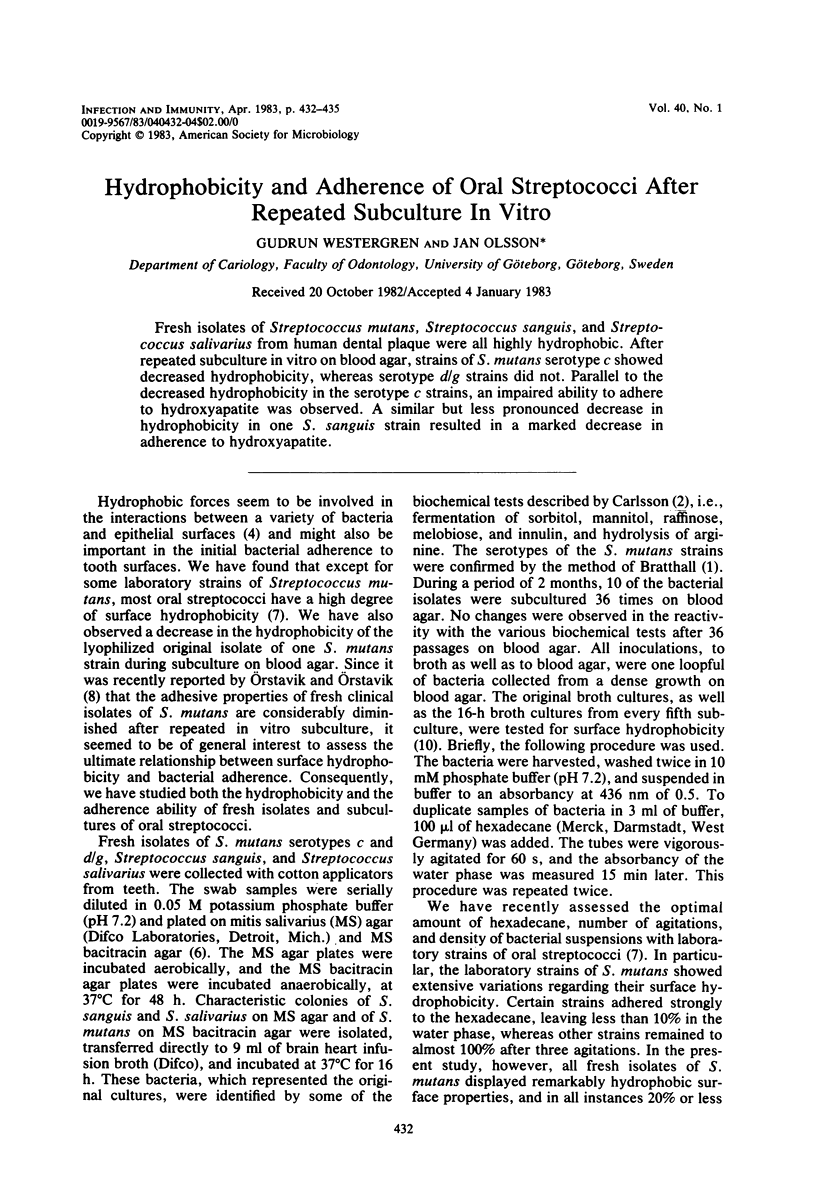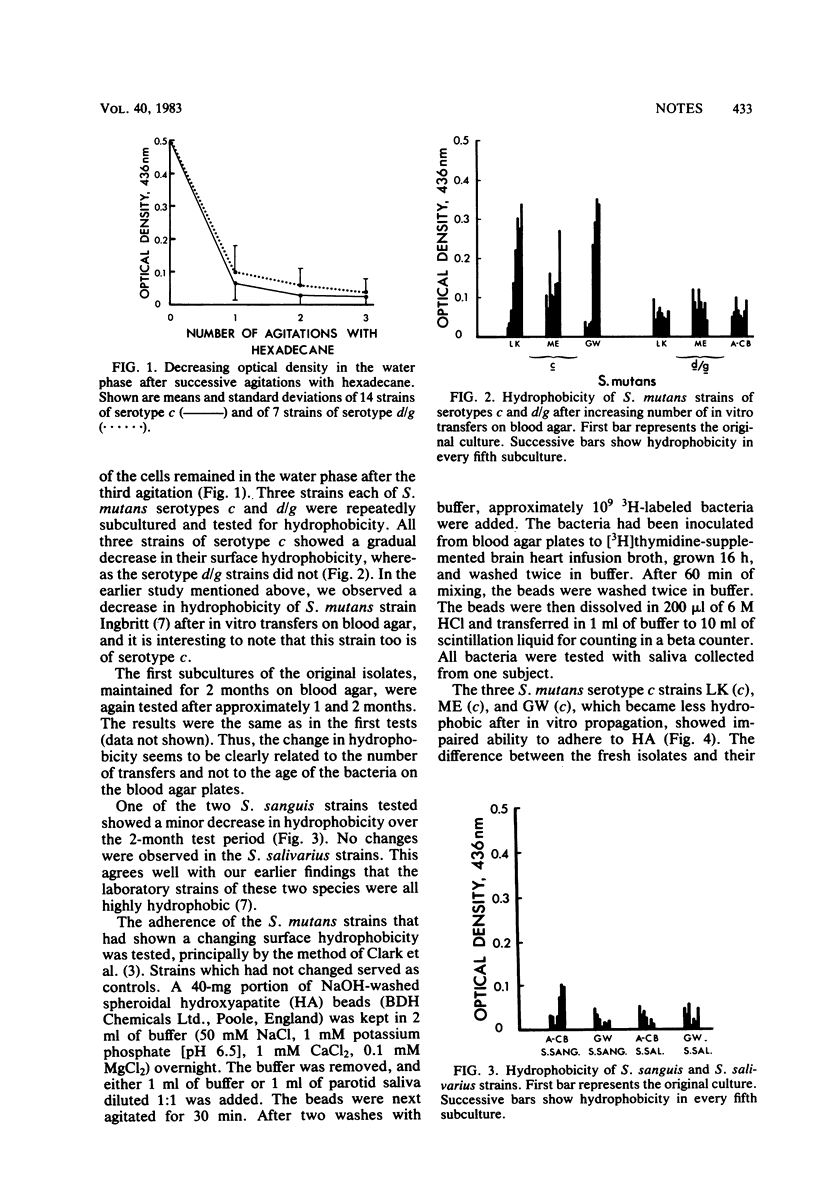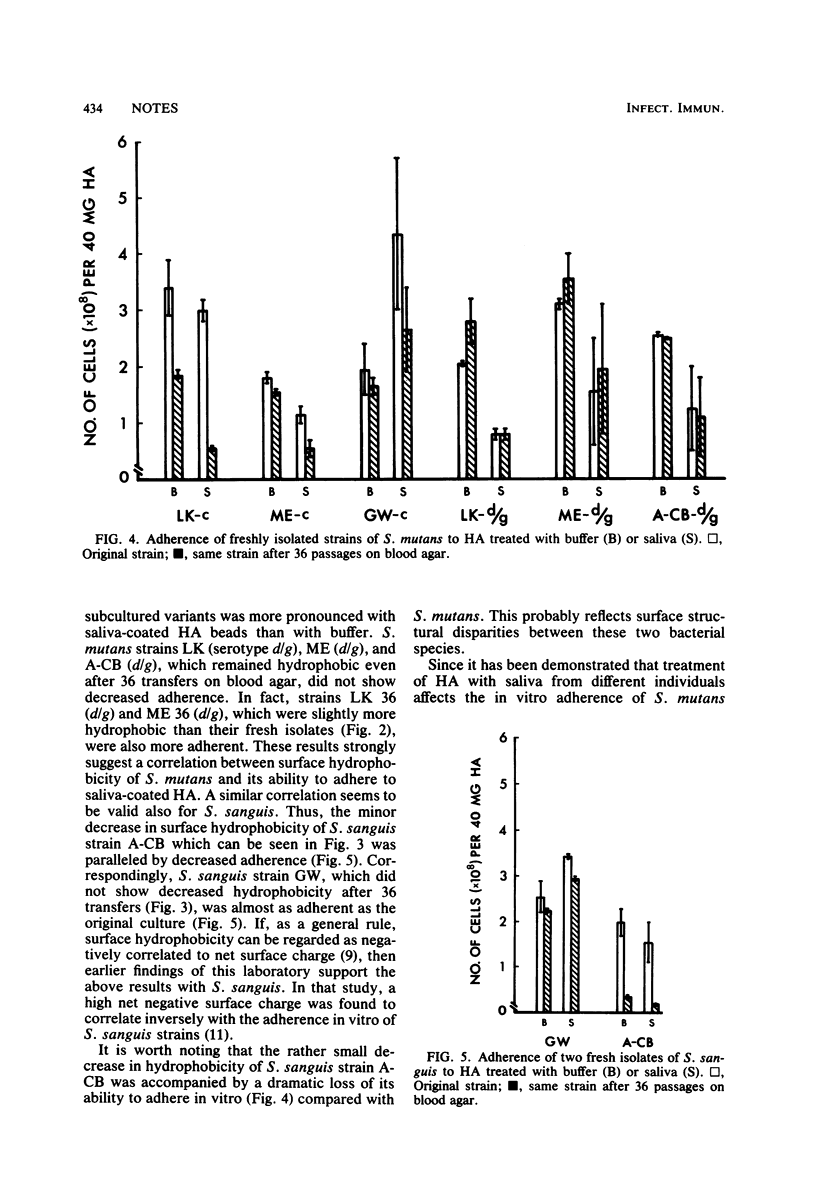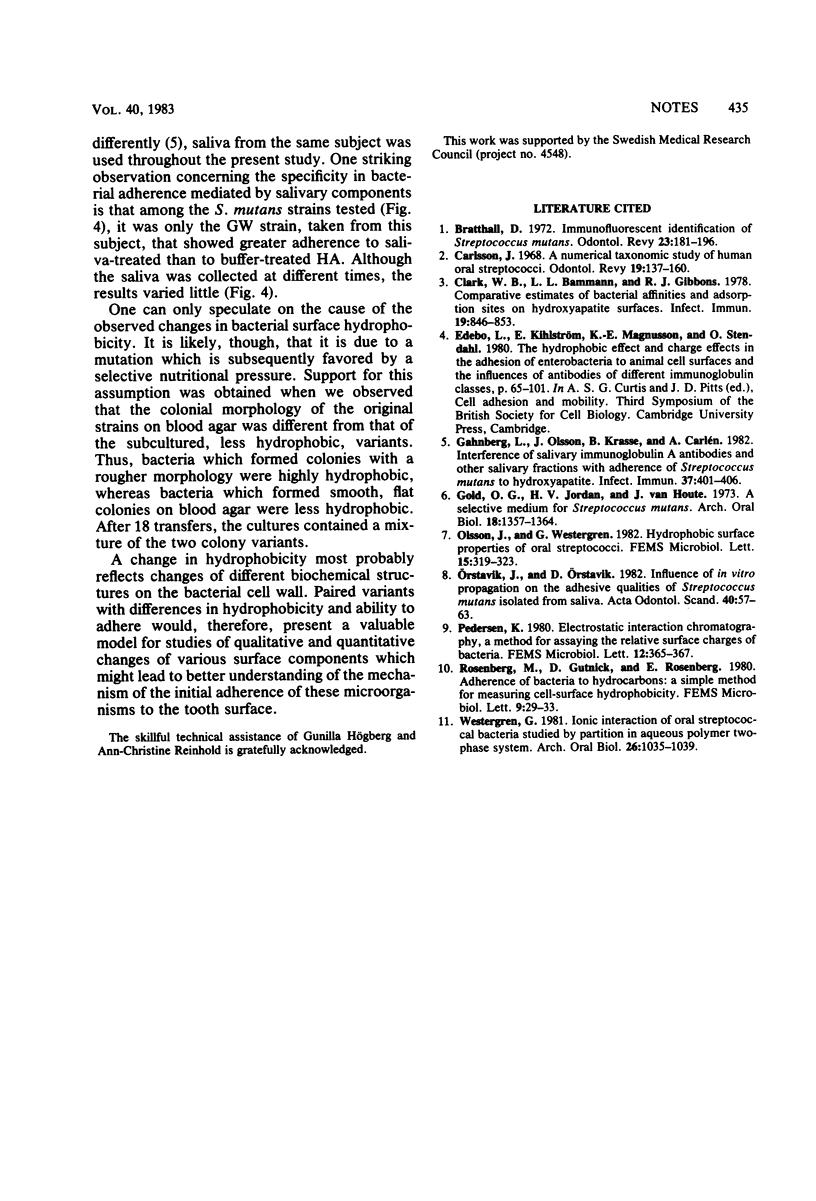Abstract
Fresh isolates of Streptococcus mutans, Streptococcus sanguis, and Streptococcus salivarius from human dental plaque were all highly hydrophobic. After repeated subculture in vitro on blood agar, strains of S. mutans serotype c showed decreased hydrophobicity, whereas serotype d/g strains did not. Parallel to the decreased hydrophobicity in the serotype c strains, an impaired ability to adhere to hydroxyapatite was observed. A similar but less pronounced decrease in hydrophobicity in one S. sanguis strain resulted in a marked decrease in adherence to hydroxyapatite.
Full text
PDF



Selected References
These references are in PubMed. This may not be the complete list of references from this article.
- Bratthall D. Immunofluorescent identification of Streptococcus mutans. Odontol Revy. 1972;23(2):181–196. [PubMed] [Google Scholar]
- Carlsson J. A numerical taxonomic study of human oral streptococci. Odontol Revy. 1968;19(2):137–160. [PubMed] [Google Scholar]
- Clark W. B., Bammann L. L., Gibbons R. J. Comparative estimates of bacterial affinities and adsorption sites on hydroxyapatite surfaces. Infect Immun. 1978 Mar;19(3):846–853. doi: 10.1128/iai.19.3.846-853.1978. [DOI] [PMC free article] [PubMed] [Google Scholar]
- Gahnberg L., Olsson J., Krasse B., Carlén A. Interference of Salivary immunoglobulin A antibodies and other salivary fractions with adherence of Streptococcus mutans to hydroxyapatite. Infect Immun. 1982 Aug;37(2):401–406. doi: 10.1128/iai.37.2.401-406.1982. [DOI] [PMC free article] [PubMed] [Google Scholar]
- Gold O. G., Jordan H. V., Van Houte J. A selective medium for Streptococcus mutans. Arch Oral Biol. 1973 Nov;18(11):1357–1364. doi: 10.1016/0003-9969(73)90109-x. [DOI] [PubMed] [Google Scholar]
- Orstavik J., Orstavik D. Influence of in vitro propagation on the adhesive qualities of Streptococcus mutans isolated from saliva. Acta Odontol Scand. 1982;40(1):57–63. doi: 10.3109/00016358209019810. [DOI] [PubMed] [Google Scholar]
- Westergren G. Ionic interaction of oral streptococcal bacteria studied by partition in an aqueous polymer two-phase system. Arch Oral Biol. 1981;26(12):1035–1039. doi: 10.1016/0003-9969(81)90114-x. [DOI] [PubMed] [Google Scholar]


